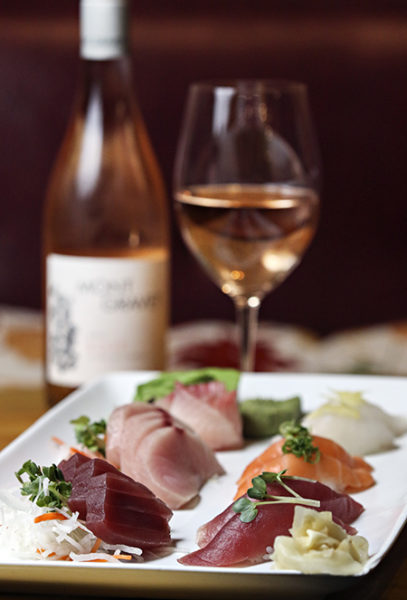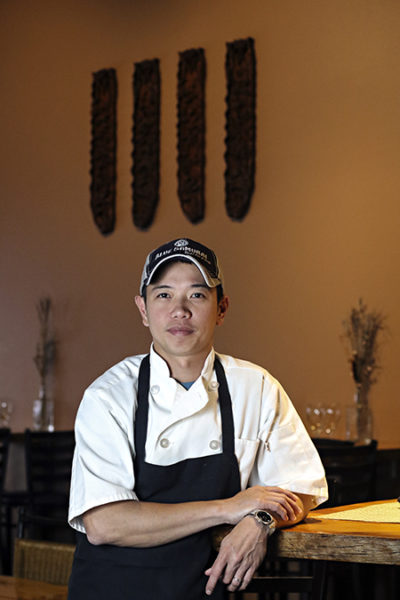On a recent Thursday afternoon at Blue Samurai Bar and Grill in downtown Kalispell, during a break between the fast-paced lunch and dinner rushes that chefs use to redeem their work stations and prep rice, owner Tuyen “Tony” Tran waited for his biweekly delivery of Bluefin tuna with a mix of apprehension and collected calm.
If those sound like conflicting emotions, it’s because they are, a contradiction tied directly to the simple complexity of what was about to be delivered.
Tran was thinking about the heavily marbled, melt-in-the-mouth underbelly meat of the Bluefin, its taste so singularly succulent it defies description, engulfing the palate in a burst of fat and flash of salt that leaves patrons weak in the knees.
He was also conscious about the increasingly rarefied existence of Bluefin, one of the most endangered delicacies in the ocean, the devastating result of chronic overfishing that has collapsed populations in both the Pacific and Atlantic oceans, and brought mounting pressure on sushi chefs to remove the prized fish from their menus.
With Bluefin populations cratering, prices skyrocketing and demand as high as ever, Tran began looking for an alternative to serving wild caught tuna, not as a means to assuage the conscious fish lover’s guilt over ordering a delicacy on the brink of extirpation, but to ensure that his own children can enjoy delicious and nutritious fish in the future.

“We want Bluefin on our menu, but like a lot of people we’re concerned about the extinction of tuna,” said Tran, explaining how he’s begun sourcing his Pacific Bluefin from a sustainable farm in Baja California, Mexico, which has implemented quotas and strict fisheries management controls based on scientific assessments.
“Farm-raised tuna is the way to go because we can ensure that the next generation has quality fish to eat,” Tran said. “If we fish out the whole ocean, our children won’t have good fish to eat. I can’t have that.”
Swirling a glass of Tavel rosé, still waiting for the delivery, Tran abruptly stood up when a member of his staff signaled to him from the kitchen. The Bluefin had arrived.

A few minutes later, he was showing off gleaming cuts of sashimi-grade Bluefin tuna, arranging them in three different parts to display the range of fat content, from lean to fatty — otoro, the most desirable part from the fish’s belly; chutoro, which straddles fatty and lean; and akami, the leanest cut of the fish.
“The fish has been very consistent since we started sourcing sustainably,” he said. “Compared to wild-caught Bluefin, it’s literally neck and neck.”
Tran moved to Kalispell from Tampa, Florida, where he ran the renowned Ocean Blue restaurant and trained under a sushi master who mentored him for years. He brings that expertise to his new restaurant and his staff, from whom he expects and demands the same deference to quality, whether they’re cutting scallions and carrots or a prime piece of fish.
Guests at Blue Samurai have quickly developed a confidence in Tran, and his customers will often employ the concept of “omakase,” translating as, “I’ll leave it to you,” deferring to the judgment of the chef, or “itamae,” and inviting him to serve the best dishes at his discretion, a skill that requires independent judgment and creativity.
While Tran included a selection of fusion rolls on his menu, he prefers the purity of nigiri and sashimi, which he said better showcases the quality of the fish he procures.
“Americans love the sushi rolls with 10 ingredients, but the Japanese tend to leave the mayonnaise and cream cheese off the menu,” he said. “I have some rolls on the menu because so many people like them, but I’m trying to convert them. You want to respect each part of the fish. You want to elevate it, not drown it in sauce.”
For a piece of nigiri, or fish served over rice, Tran presses perfectly plump grains of short-grain rice, which are cooked using precisely measured quantities of rice vinegar, salt and sugar, into a compact pellet in his hands. It’s a simple act that couldn’t be more representative of sushi’s nuanced complexity — too much rice and it will be more than a mouthful; too little and it will be overpowered by the fish; too much pressure and it will be hard; too little and the pellet will fall apart.
When a visitor moves to dip the nigiri in a bowl of soy sauce, Tran explains that it’s customary to flip the piece of sushi and lightly dip it fish-side down, lest the rice soak up too much sauce and overwhelm the fish.

“Rice is just as important as the fish. It’s the key ingredient in sushi,” he said. “You want to try to keep it as perfect as possible. You want to protect it.”
It’s also acceptable to eat a piece of nigiri sushi with your hands if chopsticks are awkward, he said.
For a piece of sashimi, Tran employs the deftness of a surgeon, slicing off a cut of Bluefin tuna and adding a delicate smear of real wasabi — a fiery green root that is grated into a paste — and imploring a customer not to use too much soy sauce.
Tran orders most of his fish whole so that he can better inspect the product, and has refused fish that aren’t up to snuff. He looks for clarity in the eyes, a bolt of sanguine brightness in its gills, and a bouncy firmness in its body.
“People who know sushi appreciate this,” Tran said. “They understand what it takes to make real sushi, that it’s an art.”
While preparing the 40-pound cut of Bluefin, Tran’s wife and two daughters, ages 6 years and 9 months old, arrived at the restaurant to say hello before the dinner rush.
After removing the tuna’s thick skin, he demonstrated its thickness by stabbing at it with the tip of his sushi knife, which deflected off the silver flesh like it was a coat of mail.
“This is what Samurai once used for armor,” he said, explaining that when his family moved to Kalispell from Tampa, he decided to name his restaurant Blue Samurai because in Japanese culture the color blue signifies purity and cleanliness, while “Samurai” translates as “those who serve.”
“Sushi chefs are just like modern-day Samurai, except we don’t use our swords to kill each other,” he said. “We just use them for fish.”
